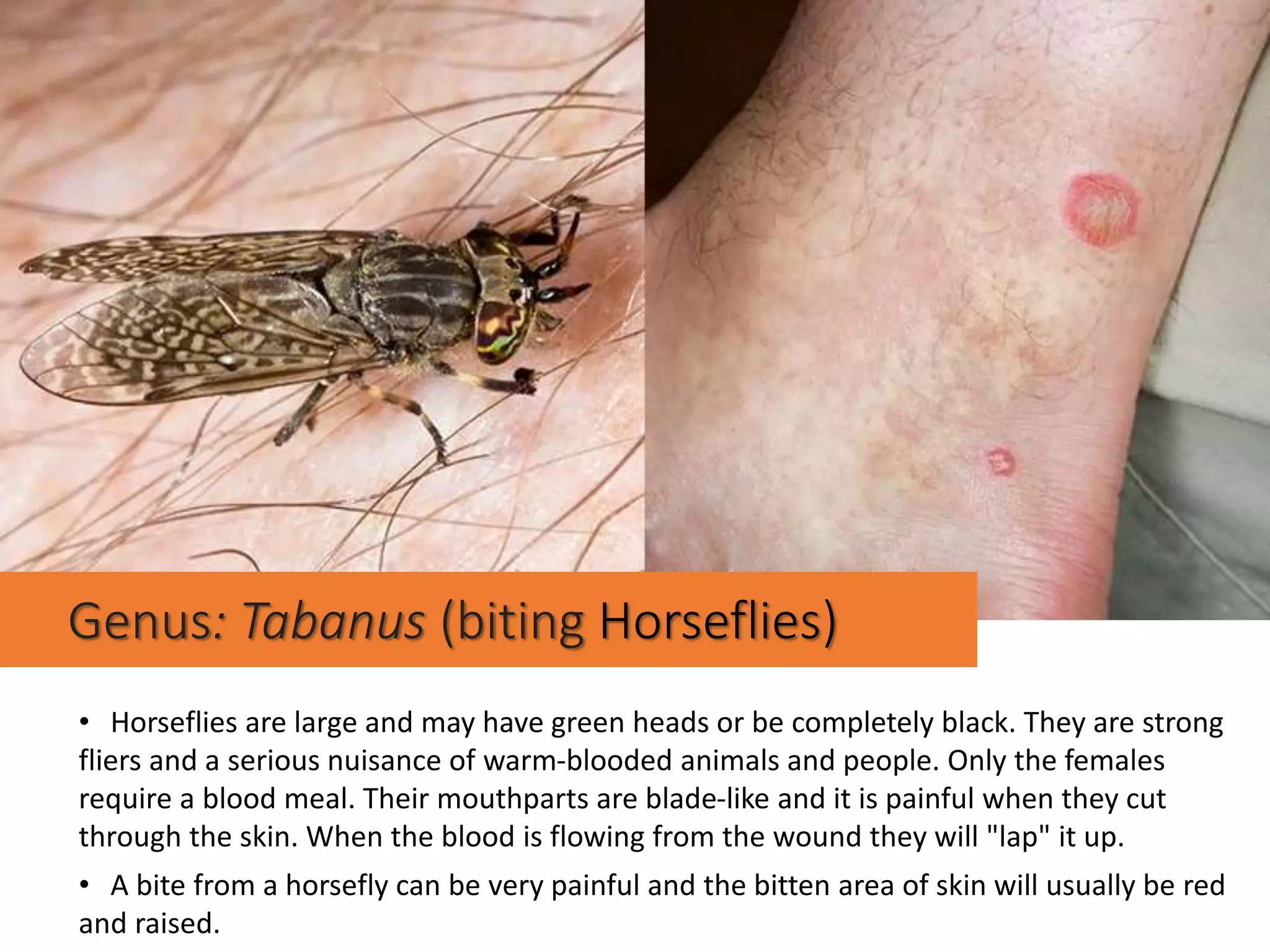This document provides an in-depth overview of arthropod allergies, focusing on the immune response and pathogenesis of allergic reactions caused by various arthropod species. It discusses the mechanisms of sensitization and effector phases of allergic reactions, the role of different allergens, and their impact on individual and community health. Additionally, it details specific arthropod species involved in allergic diseases, including house dust mites, storage mites, and cockroaches, along with the clinical presentations associated with these allergies.






















![American cockroach (species Periplaneta americana), a native of Africa
and the Middle East, is 30 to 50 mm (up to about 2 inches) long, is
reddish brown, and lives outdoors or in dark heated indoor areas.
American cockroach has well-developed wings. However, most species
are not good fliers.
The German cockroach (Blattella germanica), a common household pest, is
light brown with two dark stripes on the prothoracic region. Because it is small
(about 12 mm [less than 0.5 inch] long), this cockroach often is carried into
homes in grocery bags and boxes. It has spread throughout the world thanks
to human transport, including long-distance transport by ship.
The Oriental cockroach (Blatta orientalis) It is also sometimes referred to as the
"black beetle" or a "water bug" because of its dark black appearance and
tendency to harbor in damp locations.It is considered one of the filthiest of
household pests. It is oval, shiny black or dark brown, It is a large species
of cockroach being 25 to 30 mm long.
Types of Cockroaches
The brown-banded cockroach (Supella longipalpa) is a species of small cockroach,
measuring about 10 to 14 mm long. It is tan to light brown and has two light-colored
bands across the wings and abdomen. Although comparable in size to the German
cockroach, they require less moisture and are therefore also found in living rooms
and bedrooms.
There are approximately 4,000 species of cockroaches in the world, and only about four of them most common:
the American cockroach, the German cockroach, the Oriental cockroach, and the Brown-banded cockroach.](https://image.slidesharecdn.com/1arthropodallergy-230814050956-78813f10/75/1-arthropod-allergy-pptx-23-2048.jpg)











































